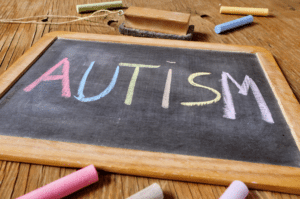ABA therapy uses a system of prompts to help individuals with disabilities learn new skills. It’s important to understand the types of prompts, such as verbal and gestural cues, and how to gradually reduce their use. Therapists, especially those with RBT certification in Maryland, aim to encourage independence by fading prompts over time.
The prompt hierarchy method ensures an approach to skill development that supports each person’s requirements. As individuals advance through the prompting levels, they work towards showcasing desired behaviors when learning challenging skills.
Effectively applying hierarchy involves determining the level of assistance and slowly decreasing reliance on prompts to enhance skill proficiency and self-sufficiency in various abilities.
Understanding ABA Therapy and Its Objectives
ABA therapy aims to modify behavior patterns, focus on skill acquisition, and address developmental disabilities. The goal is to enhance the individual learner’s cognitive abilities by applying behavior analysis principles.
Therapists utilize a hierarchy of prompts to guide the learning process, starting with cues and progressing to gestural and model prompts. By adjusting the level of prompting according to the child’s requirements, therapists assist in acquiring skills.
The goal of the therapy is to support the development of expressive skills reduce frustration and foster independence in tasks. This structured approach ensures teaching methods tailored to each learners stage of development.
Success Stories
“Move Up ABA has been a lifeline for our family. Before starting therapy, our son struggled with daily routines and communication. Now, he’s more independent and even initiated a conversation with a classmate for the first time! The progress we’ve seen in just six months is truly remarkable.”
- Emily R., Silver Spring, Accountant
“As a single dad, I was overwhelmed trying to manage my child’s behavior. The Move Up ABA team not only provided amazing support for my little girl but also taught me practical strategies to use at home. Their in-home sessions fit perfectly with our busy schedule. I’m so grateful for their patience and expertise.”
- Michael T., Rockville, Middle School Teacher
“We were hesitant about starting ABA therapy, but Move Up ABA’s approach put us at ease from day one. Our twins have made incredible strides in their social skills and self-regulation. The therapists are like extended family now, and we couldn’t be happier with our decision to work with them.”
- Aisha and James L., Simpson, Police Officers
Ready to start your child's journey to success? Schedule a free consultation today! 📞 Call (410) 497-8865.
Therapists utilize a hierarchy of prompts to guide the learning process, starting with cues and progressing to gestural and model prompts. By adjusting the level of prompting according to the child’s requirements, therapists assist in acquiring skills.
The goal of the therapy is to support the development of expressive skills, reduce frustration, and foster independence in tasks. This structured approach ensures teaching methods tailored to each learner’s stage of development.
In discussions around autism, questions such as “Is Kanye autistic?” can arise, reflecting the broader interest in understanding autism and its diverse manifestations. It’s essential to approach these discussions with accurate information and compassion.
Defining Applied Behavior Analysis (ABA)
Applied Behavior Analysis (ABA) is an approach grounded in behavior analysis principles. It focuses on comprehending how behavior functions, within an environment to bring about changes. ABA is commonly used to enhance behaviors and has demonstrated effectiveness across various settings.
By identifying connections between behavior and environmental influences, ABA aids individuals in acquiring skills and minimizing challenging behaviors. This evidence-based practice is highly personalized, customizing interventions based on needs and objectives.
ABA therapy follows a structured approach involving assessment, intervention, and evaluation to support skill development and enhance the well-being of individuals with developmental disabilities.
The Goals of ABA Therapy

The primary focus of ABA therapy is to enhance behaviors and abilities in people with disabilities.
Its key aims are to improve communication, reduce behaviors, encourage interactions, and promote independence.
By using a hierarchy of prompts, therapists can customize interventions to address the requirements of each individual.
The main aim of ABA therapy is to facilitate the learning of skills and adaptive behaviors while gradually reducing the reliance, on prompts.
By incorporating prompts and positive reinforcement, individuals can advance towards achieving desired outcomes, resulting in improved learning results and an enhanced quality of life.
The Role of Prompts in ABA Therapy
Prompts are essential in ABA therapy helping individuals learn by guiding them towards the responses. They come in types, including physical, verbal, gestural, modeling and positional prompts tailored to meet each learners needs.
Offering support through prompts assists individuals with disabilities in acquiring new skills. Public discussions, such as those about Barron Trump autism, often emphasize the importance of personalized prompting strategies in helping children develop essential skills.
Behavior analysts strategically use prompts to encourage desired behaviors while gradually reducing their reliance to promote functioning. The utilization of prompts is an aspect of ABA therapy that involves selecting and sequencing them to facilitate skill acquisition and behavioral growth.
What Are Prompts?
In ABA therapy prompts serve as cues. Hints that aid learners in mastering skills or behaviors. These prompts take forms such as verbal and gestural cues customized to meet individual learning requirements. How do these prompts contribute to the learning journey?
How Prompts Support Learning and Development
Prompts play a role in fostering learning and development within applied behavior analysis (ABA therapy). By offering types of prompts, like verbal, gestural, and modeling cues, individuals receive the necessary guidance to comprehend and perform desired behaviors.
These prompts help learners learn step by step, making complex tasks easier to understand.
By breaking down tasks into steps, learners can progress gradually towards the answer. The hierarchy of prompts ensures that prompts consider each learner’s needs, making it easier for them to develop new skills.
Using types of prompts strategically can support individuals with developmental disabilities, helping them achieve their goals and improve their skills effectively.
What is Prompt Hierarchy in ABA?
The prompt hierarchy is a technique in applied behavior analysis that guides individuals with developmental disabilities to acquire new skills. It involves using prompts based on the learners’ abilities and needs.
Starting with prompts like physical or verbal cues and gradually moving towards less intrusive ones like gestures or modeling, the prompt hierarchy aims to help individuals respond independently by fading out prompts over time.
This systematic approach allows behavior analysts and ABA therapists to support learning by reducing reliance on prompts as skills improve. Understanding how prompt hierarchy works is essential for helping individuals master abilities.
The Significance of a Structured Approach
Having an approach in ABA therapy is vital, for skill development.By following a hierarchy of prompts behavior analysts ensure that learners gradually become more independent by fading the prompts over time.
This methodical approach allows for the progression, from cues like guiding a childs hand to subtler forms such as gestures or verbal cues. This progression helps reduce frustration levels and aligns with the learners stage.
The prompting hierarchy facilitates the learning process for tasks involving fine motor skills, such as helping a child roll a ball or tackle challenging activities.
Additionally, this structured approach minimizes the risk of learners’ frustration levels. Implementing prompts paves a path towards achieving independence making the learning journey smoother and more effective.
Overview of the Prompt Hierarchy Levels

In ABA therapy, prompt hierarchy levels offer a strategic framework for providing guidance based on individual learning requirements. The progression ranges from intrusive to intrusive prompts with the goal of reducing support as skills improve.
This systematic approach ensures a shift of responsibility from therapist to individual, fostering skill development through a sequence of prompts defined by ABA professionals.
The hierarchy of prompts consists of levels, including verbal cues, written script prompts, partial verbal cues, gestures, like a nod or shoulder shrug, a 5-second delay, and finally, independence.
These levels encompass cues, gestures, partial physical support and full physical assistance all customized to meet the learners needs. By adhering to this hierarchy behavior analysts can assist in advancing individuals, towards achieving skill performance based on their developmental stages and cognitive capacities.
Types of Prompts in ABA Therapy
In the realm of ABA therapy, a variety of prompts play a role in steering individuals towards the desired responses. These prompts are classified into categories, including prompts, verbal prompts, gestural prompts, model prompts and positional prompts.
Physical prompts entail providing assistance to help individuals carry out the correct response. Verbal prompts involve using cues or instructions to prompt the desired behavior. Gestural prompts utilize gestures or visual cues to aid in skill development.
Model prompts showcase the desired behavior for individuals to emulate. Positional prompts offer guidance by showing the sequence of actions. Each type fulfills a function in facilitating the learning process within ABA therapy.
1. Physical Prompts
Physical prompting in ABA therapy consists of offering guidance to assist individuals in responding accurately. These prompts are especially beneficial for learners with disabilities as they provide support in skill acquisition.
By guiding a child’s hand through a task, such as using utensils during meals, physical prompting can be applied at various levels of intensity, including partial physical prompting to facilitate the learning of new skills.
However, the key to using cues is to gradually reduce their reliance as the person becomes more skilled, ensuring they can complete tasks independently over time. This systematic approach corresponds with the prompting hierarchy offering support to individuals at stages of their learning process.
2. Verbal Prompts
Verbal cues in ABA therapy involve using language prompts to steer individuals towards the desired behavior. These cues consist of instructions or guidance given to prompt a response. Unlike cues verbal prompts rely on language than physical assistance.
They are particularly beneficial for learners with impairments or those who respond well to stimuli. Verbal prompts can range from directions to detailed explanations based on the individuals requirements. Skillful use of prompts can aid in acquiring skills by offering necessary guidance and encouragement through spoken words.
3. Gestural Prompts
Gestural cues play a role in the hierarchy within ABA therapy. These cues utilize gestures or signals to guide an individual’s behavior toward the intended outcome. Examples include pointing, nodding, or hand movements to prompt actions.
Gestural prompts are especially effective for learners who respond positively to stimuli or face challenges, with communication.
By including gestures, in the hierarchy of prompts, behavior analysts can offer assistance to meet the needs of each learner, making it easier for them to learn new skills and minimizing the reliance on more intrusive prompts.
The use of gestural cues helps individuals transition towards performing tasks, ultimately guiding them to exhibit the desired behavior without constant prompting.
4. Model Prompts
Model prompts, also referred to as example or demonstrative prompts, are prompts that visually demonstrate how a task should be done. These prompts showcase the skill or provide visual or verbal instructions for the learner to follow. Model prompts are especially effective when teaching skills or behaviors that may be unfamiliar to the learner.
For instance, when teaching a child how to tie their shoes, a model prompt could involve demonstrating each step while explaining them verbally. The child can then mimic these actions until they can tie their shoes independently.
Model prompts can complement types of prompts like cues or physical guidance to offer additional support and reinforcement. Learners can progress toward performing tasks by reducing reliance on model prompts over time. Using cues
5. Positional Prompts
Positional cues are a form of guidance that involves adjusting the position or placement of a signal or instruction to assist the learner. These cues are commonly utilized to teach abilities that rely on positioning or spatial awareness.
For instance, when instructing a child on how to handle utensils during meals, a positional cue may entail arranging the utensils to direct the child’s hand movements. Through cues like a gesture, the therapist can aid the child in grasping how to use utensils correctly and in developing essential motor skills.
Positional cues can also effectively teach tasks like establishing a morning routine. For example, if a child struggles with getting dressed in the morning, a positional cue could involve organizing clothes in a sequence or layout to assist the child in grasping the order of steps.
By reducing reliance on cues and encouraging independent actions, from the learner, they can acquire the abilities needed to carry out tasks autonomously.
Implementing Prompt Hierarchy in Practice
In real-world applications, implementing a hierarchy involves customizing the prompts used to suit the needs of each individual learner. Prompt hierarchy refers to the systematic arrangement and fading of prompts to promote independence and skill acquisition.
Can you provide an example of a hierarchy in action? Utilizing hierarchy necessitates conducting personalized evaluations and considering factors such as the learner’s abilities, developmental stage, and unique characteristics. Different learners may require varying types and levels of prompts to learn skills.
ABA therapists rely on their knowledge to decide how much assistance each learner needs, considering their individual learning preferences and capabilities. As they gradually reduce prompts and offer help as time goes on, learners are motivated to carry out the desired behavior or skill on their own.
The hierarchy of prompts is a procedure that demands evaluation and fine-tuning to guarantee the learner’s advancement and achievements. It facilitates a shift of accountability from the therapist to the learner, ultimately fostering self-reliance and skill proficiency.
Identifying the Appropriate Level of Prompting
It’s crucial to find the balance of guidance, for each learner when creating a hierarchy. This hierarchy is a sequence of prompts that gradually lessens in intensity to encourage independence.
What techniques are used to guide learners in ABA?
Various factors must be taken into account when deciding on the level of guidance, such as the learner’s requirements, cognitive skills, and stage of development. ABA practitioners conduct evaluations to gather details about the learner’s abilities, aiding in developing a hierarchy strategy.
The aim is to offer support to enable the learner to accomplish tasks or behaviors without relying too heavily on prompts. Giving support can hinder independence and impede skill development, while insufficient support may result in frustration and setbacks.
By monitoring progress and adjusting guidance levels as necessary, ABA practitioners ensure that learners are appropriately challenged and continue making strides toward self-sufficiency.
Strategies for Fading Prompts
Gradually reducing the use of prompts is an approach in ABA therapy that helps individuals become more independent. Fading prompts means decreasing the level of assistance given to the learner over time.
One method for fading prompts is to introduce a time delay. This involves extending the time between giving an instruction or cue and providing a prompt. By starting with prompts and then increasing the delay, learners are motivated to respond on their own.
Another technique for fading prompts is using response cues. These cues offer support to guide learners in giving responses. As learners improve, these cues are gradually reduced to encourage responses.
It’s important to remember that fading prompts should be done gradually and thoughtfully, considering each learner’s progress and unique needs. ABA therapists regularly evaluate learners’ skills. Adjust the fading process accordingly to enhance skill development and independence.
What is the system of least to most prompts?
The system progresses from least to most prompts, also known as intrusive or increasing assistance operates by gradually escalating the level of support based on requirements. The objective is to encourage self directed learning by commencing with aid and reducing the prompts once proficiency is achieved.
Here’s how it works:
- Independent: The learner is encouraged to respond without any prompts.
- Least Intrusive Prompt: If the learner encounters difficulty, a subtle prompt, like a hint or gesture, is given.
- More Intrusive Prompts: If additional help is needed, increasingly clear prompts are introduced, such as modeling or partial physical guidance.
The sequence and nature of prompts are customized to match the skill and individual being taught. The aim is to begin with a prompt that will still elicit an answer.
Benefits of Prompt Hierarchy in ABA

The use of hierarchy in applied behavior analysis (ABA) provides advantages for individuals who are learning new skills and behaviors. Here’s a breakdown of the benefits:
- Promotes Independence: By reducing prompts as learners progress, the system empowers them to complete tasks on their own, fostering a sense of achievement and boosting self-confidence.
- Increased Skill Acquisition: The structured prompt hierarchy helps learners acquire skills efficiently by bridging the gap between their current abilities and desired outcomes.
- Generalization of Skills: A designed prompt hierarchy includes types of prompts that fade over time, allowing learners to apply acquired skills independently in different contexts.
- Reduced Reliance on Prompts: The gradual fading out of prompts discourages learners from relying on assistance promoting independent problem-solving and critical thinking.
- Reduced Frustration: This approach minimizes frustration for both learners and therapists involved in the learning process. By offering tailored support at every stage, students can achieve success throughout their learning journey, helping prevent them from feeling overwhelmed or disheartened.
- Personalized Learning: The sequence of prompts can be adjusted based on each student’s needs and capabilities. This ensures that the assistance provided is suitable and encourages learning for each person.
In general, the prompt sequence, in ABA, serves as a tool in creating a nurturing learning atmosphere. It enables individuals to enhance their autonomy, acquire skills efficiently, and apply them in settings, ultimately fostering their achievements.
Conclusion
In summary, grasping the hierarchy of prompts is crucial in ABA therapy for learning and growth. By following an approach and using prompts at the appropriate level, individuals can move closer to reaching their therapy objectives.
Different types of prompts cater to needs and learning styles, making them adaptable for a range of learners. Overcoming challenges and recognizing when to reduce prompts are elements of implementation.
Overall prompt hierarchy plays a role in facilitating skill development and promoting independence in individuals undergoing ABA therapy.
At Move Up ABA, we are committed to delivering top-notch ABA therapy for individuals with autism spectrum disorder. Our experienced team employs evidence-based methods, including hierarchy, to design custom treatment plans that foster skill enhancement and autonomy.
Through our demeanor and personalized interventions, we assist individuals in making strides. Explore how Move Up ABA can support the growth of your loved one by getting in touch with us at Move Up ABA.
Frequently Asked Questions
How do you decide which type of prompt to use?
The choice of prompt utilized is based on each learner’s requirements, considering factors like challenges and cognitive capabilities. ABA therapists evaluate the learners’ competencies to determine the prompt type, whether visual or physical, for effectively teaching the targeted behavior or skill.
What are some common challenges when using prompts, and how can they be addressed?
One common challenge is the risk of learners becoming overly reliant on prompts, which leads to frustration due to increased dependency. These obstacles can be mitigated by reducing the use of prompts over time. Additionally, implementing strategies before an action takes place to prevent errors and ensure that learners receive reinforcement for independent responses.
Can prompt hierarchy be used with all ages and types of learners?
Indeed, prompt hierarchy can be applied across age groups and diverse levels of development and cognitive abilities. This hierarchical approach is tailored to meet each learner’s needs while emphasizing independence. Whether dealing with a child on the autism spectrum or an adult with impairments, prompt hierarchy can be customized to suit their individual learning preferences and capabilities.
Is Messi autistic? While there have been discussions and speculation about whether Lionel Messi, the famous footballer, is autistic, there is no verified information confirming this. It’s crucial to rely on accurate and credible sources rather than unverified claims. The focus should remain on understanding and supporting those who benefit from ABA therapy and similar interventions.






